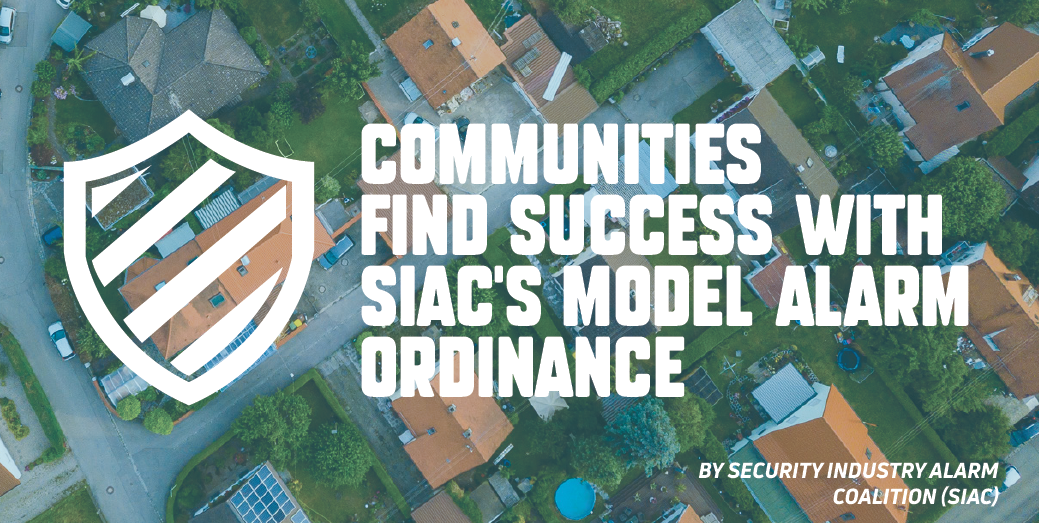Communities Find Success with SIAC’s Model Alarm Ordinance

A new, third-party study funded by the Security Industry Alarm Association (SIAC) and conducted by a professor at the UNC-Charlotte, Criminal Justice & Criminology Department shows the clear benefit to law enforcement of the Model Alarm Ordinance, promoted by SIAC. The study finds that most electronic security systems in the communities studied protect life and property without generating unnecessary
calls for police services.
Dr. Joe Kuhns, Professor at UNC-Charlotte, Criminal Justice & Criminology Department and a former Senior Policy Analyst at the U.S. Department of Justice, conducted the study that examined four communities that had adopted the Model Alarm Ordinance to help reduce unnecessary calls for service while maintaining police response to alarms.
The four communities included Charlotte-Mecklenburg, North Carolina; Atlanta, Georgia; Marietta, Georgia; and Montgomery County, Maryland. These communities represented a wide demographic including two large agencies, one smaller suburban agency and one county agency managing more than 570,000 permitted alarm systems combined.
“A key finding of the study is that the vast majority of alarm systems in these four locations were effective at protecting lives and property while generating zero calls for service in a given year,” said Kuhns. “Only a tiny percentage are problematic systems that generated multiple calls for service.”
The annual average percentage of registered alarms that generated zero dispatches was: 92% in Charlotte-Mecklenburg, 82.6% in Atlanta, 87.5% in Montgomery County, and 66.4% in Marietta. These statistics represented an 8- or 10-year average, depending on how long the ordinance had been in effect.
“It is also noteworthy that the percentage of zero dispatches tends to increase over time,” said Kuhns. “As jurisdictions get better at administration, and the public becomes more familiar with the ordinance, results consistently improved over time in these four settings.”
The proportion of problematic systems, which generated three or more dispatches in a year, was .09% in Charlotte-Mecklenburg, 3.5% in Atlanta, 1.08% in Montgomery County and 8.7% in Marietta.
“This study is very important and adds credence to the Model Alarm Ordinance,” said Stan Martin, executive director of the Security Industry Alarm Coalition (SIAC). “While the industry is held in high regard by city officials and police, having a third-party endorsement from an expert like Dr. Kuhns gives credibility to our industry initiatives and allows good tools to counter industry opponents and skeptics.”
The Model Alarm Ordinance was created in collaboration with leaders in public safety through organizations such as the International Association of Chiefs of Police and the National Sheriffs’ Association.
“The Model Alarm Ordinance directly addresses the issue that the vast majority of false alarms are caused by user error,” said Martin. “The study demonstrates that the strategy of focusing on the chronic abusers and fining owners who are careless in operating their electronic security systems is the most effective way of minimizing calls for service. In addition, the Model Alarm Ordinance is a framework that communities can modify to best fit their local needs.”
Kuhns concluded from his study that if the same tactics can be applied nationwide with the help of SIAC, many cities and police departments will benefit greatly over time.
“False alarms did not consume a lot of law enforcement resources in the four agencies we studied,” said Kuhns. “If we can replicate what they are doing across the nation’s 18,000+ law enforcement agencies, we are going to wind up saving a whole lot of money and time which can be devoted to other public safety priorities.”




